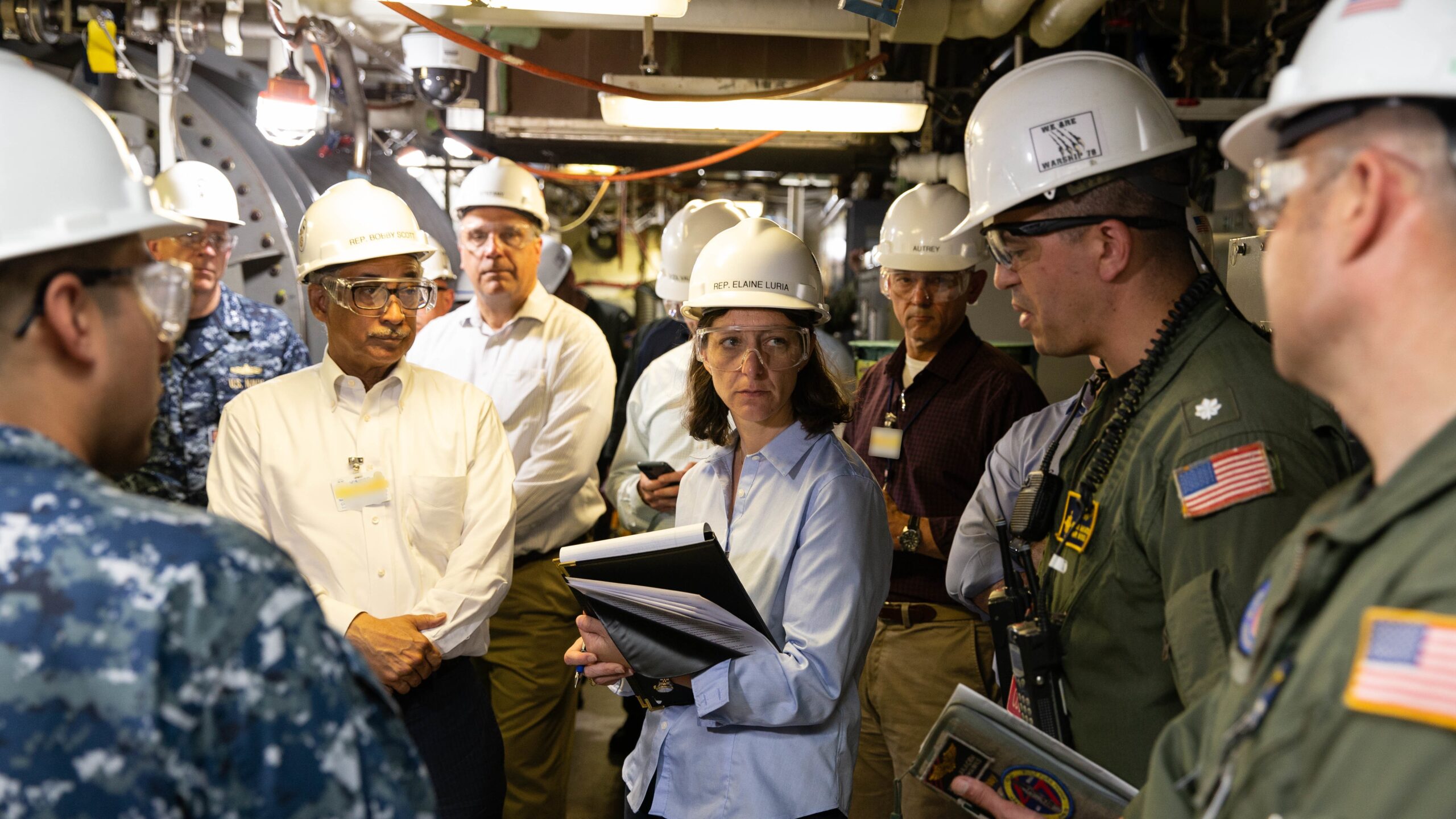
Rep. Elaine Luria, center, is pushing for more money for shipyards. (US Navy/Zachary Melvin)
WASHINGTON: Amidst calls for the Navy to accelerate its plans to revitalize its four public shipyards, Rep. Elaine Luria, D-Va., a former Navy commander, says she is hopeful that she and a bipartisan group of lawmakers will be able to use the annual defense policy bill to speed things up.
“A couple years ago … we asked why 20 years?” Luria said of the Navy’s plans while speaking to reporters today at the Naval Submarine League symposium. The answer was “20 years seemed like a reasonable timeframe. We came back and said, ‘well, what can you do to speed it up? What can you get done in 10 years? What can you get done in five years?”
The service’s plan to restore and optimize its four public shipyards, an effort run through Program Executive Office Shipyard Infrastructure Optimization (SIOP), was launched in 2018 with a projected budget of $21 billion over 20 years. But having now run for three years with less progress than lawmakers hoped for, Luria and others are aggressively questioning the 20-year timeline.
RELATED: Navy Establishes New Flag Officer Job To Oversee Shipyard Revamp Plans
The Virginia lawmaker, a member on the House Armed Services Committee, is a cosponsor on the Shipyard Act of 2021, a separate piece of legislation that would grant $21 billion for the public shipyards, an additional $4 billion for private facilities and $350 million for the Coast Guard. Luria today noted that a handful of lawmakers pushed to include that legislation into the bipartisan infrastructure legislation that President Joe Biden signed earlier this week.
That effort failed, but there is now a push in the Senate to pass the legislation by including it into the Fiscal Year 2022 National Defense Authorization Act. Asked how confident she was that would happen, Luria paused.
“I would like to see some portion of that,” she said. “We need to make sure that we have a very … robust investment in our shipyards. I don’t know if we can get that full amount.”
The boost for SIOP likely faces long odds as the Senate works to bring the NDAA to the floor this week. But if it is included in the NDAA, the next challenge will be matching the investment in the defense spending bill, which falls under the House and Senate Appropriations Committees.
Historically, initiatives that may have support from lawmakers overseeing Pentagon policy can face much stiffer opposition with the committees responsible for cutting the checks associated with the policy bill.
Major trends and takeaways from the Defense Department’s Unfunded Priority Lists
Mark Cancian and Chris Park of CSIS break down what is in this year’s unfunded priority lists and what they say about the state of the US military.


























